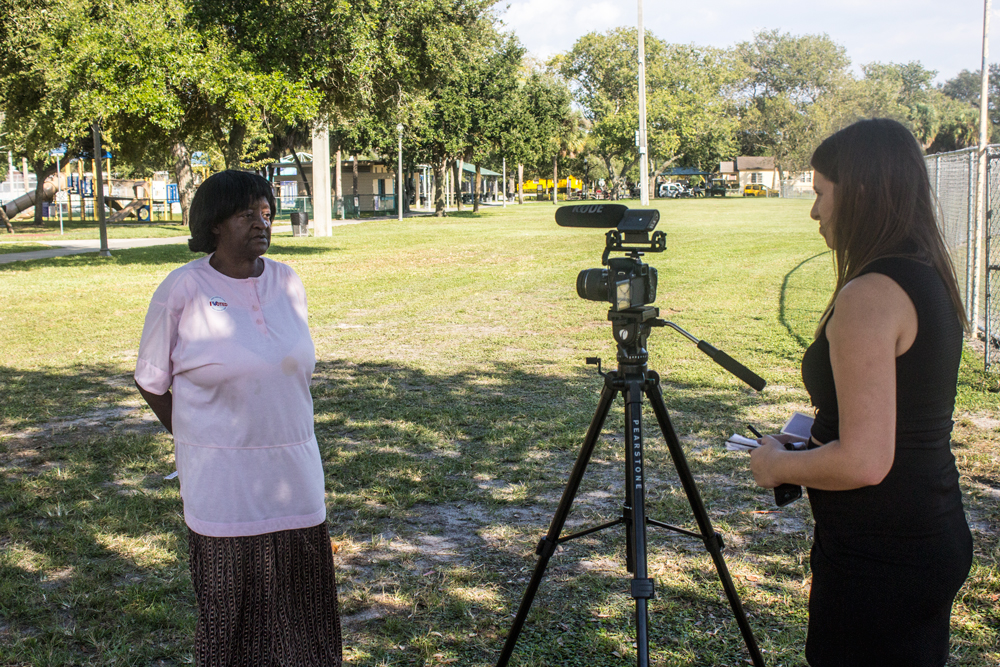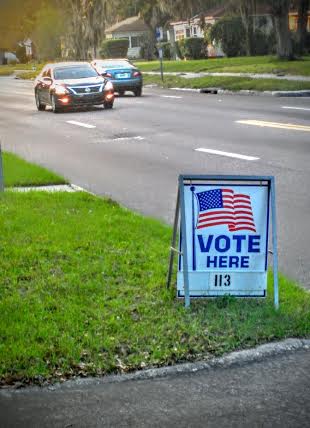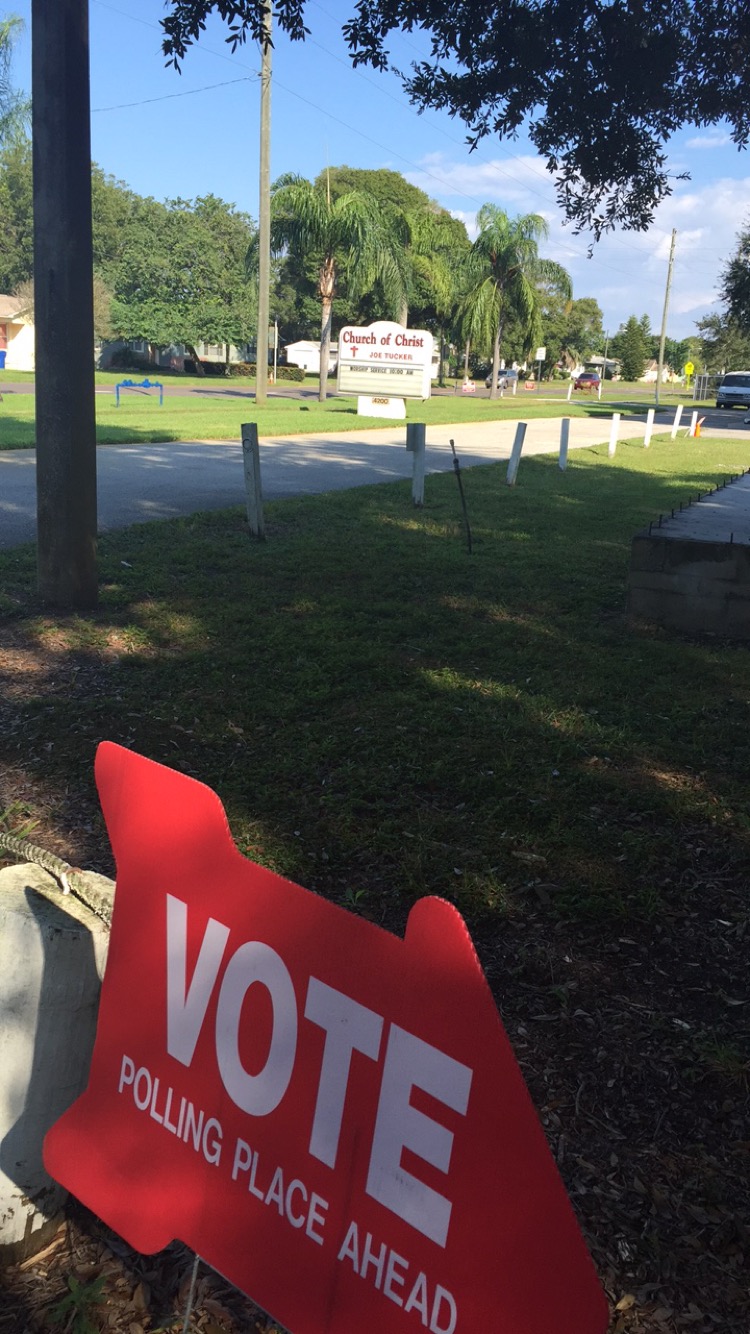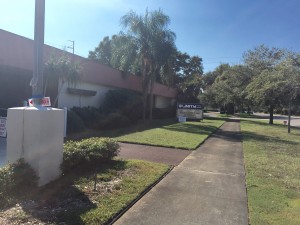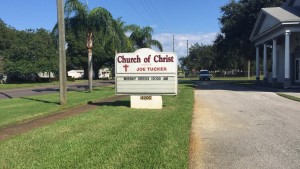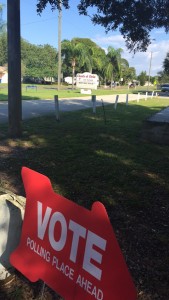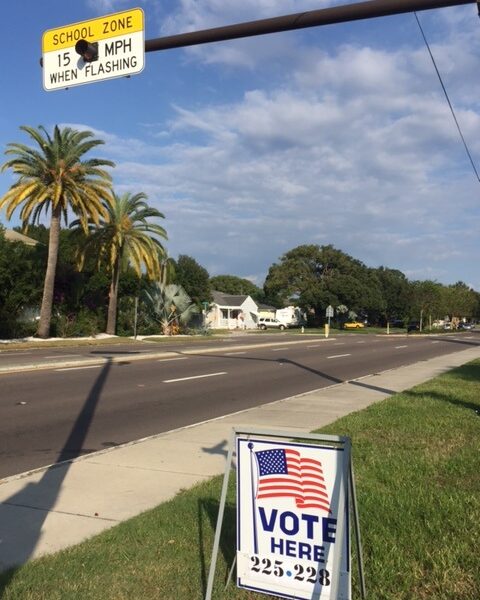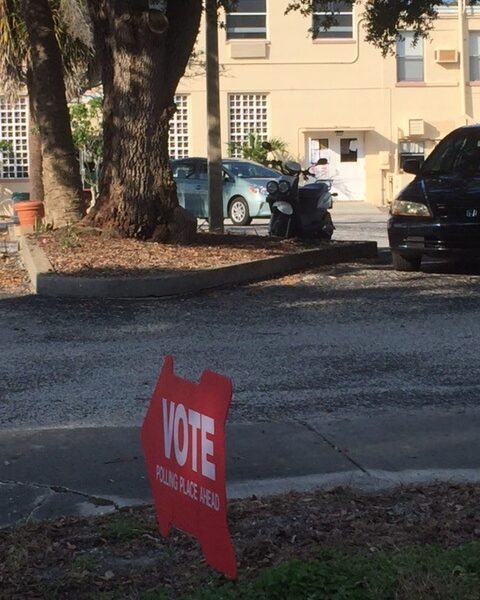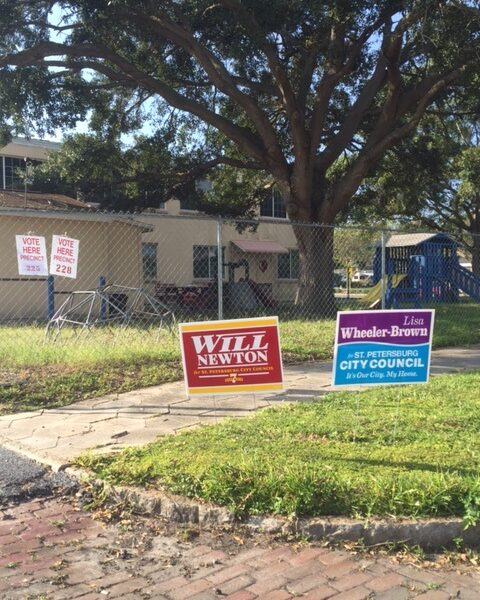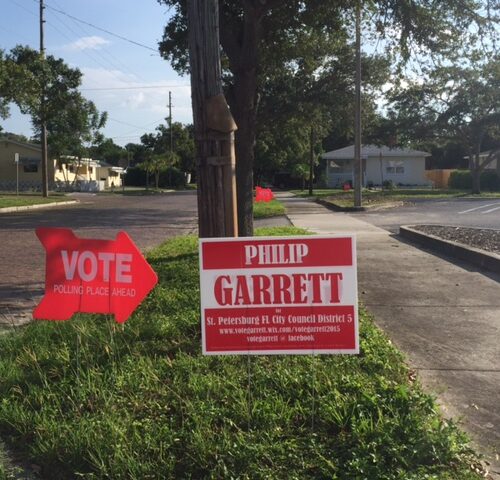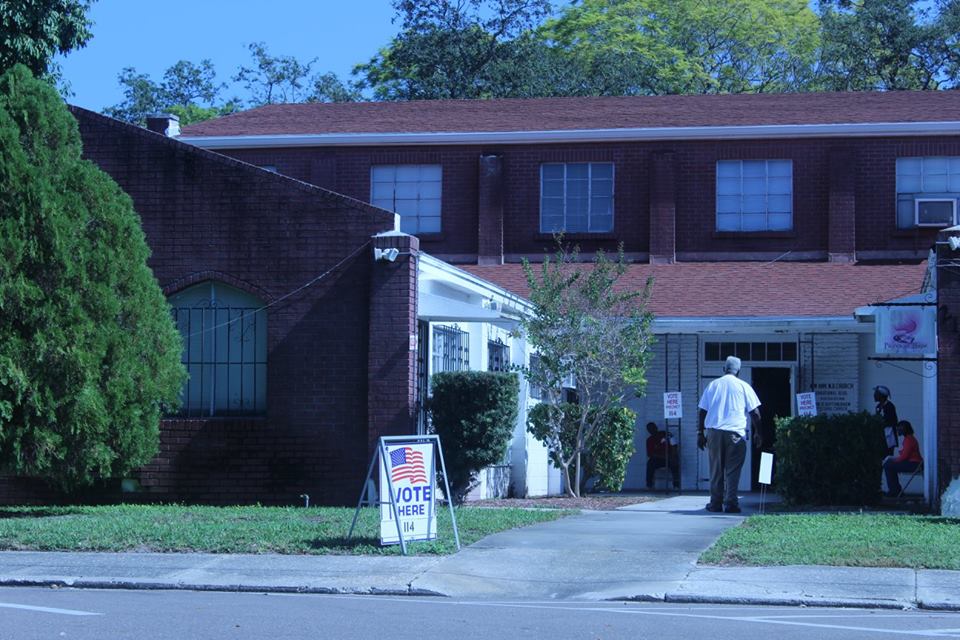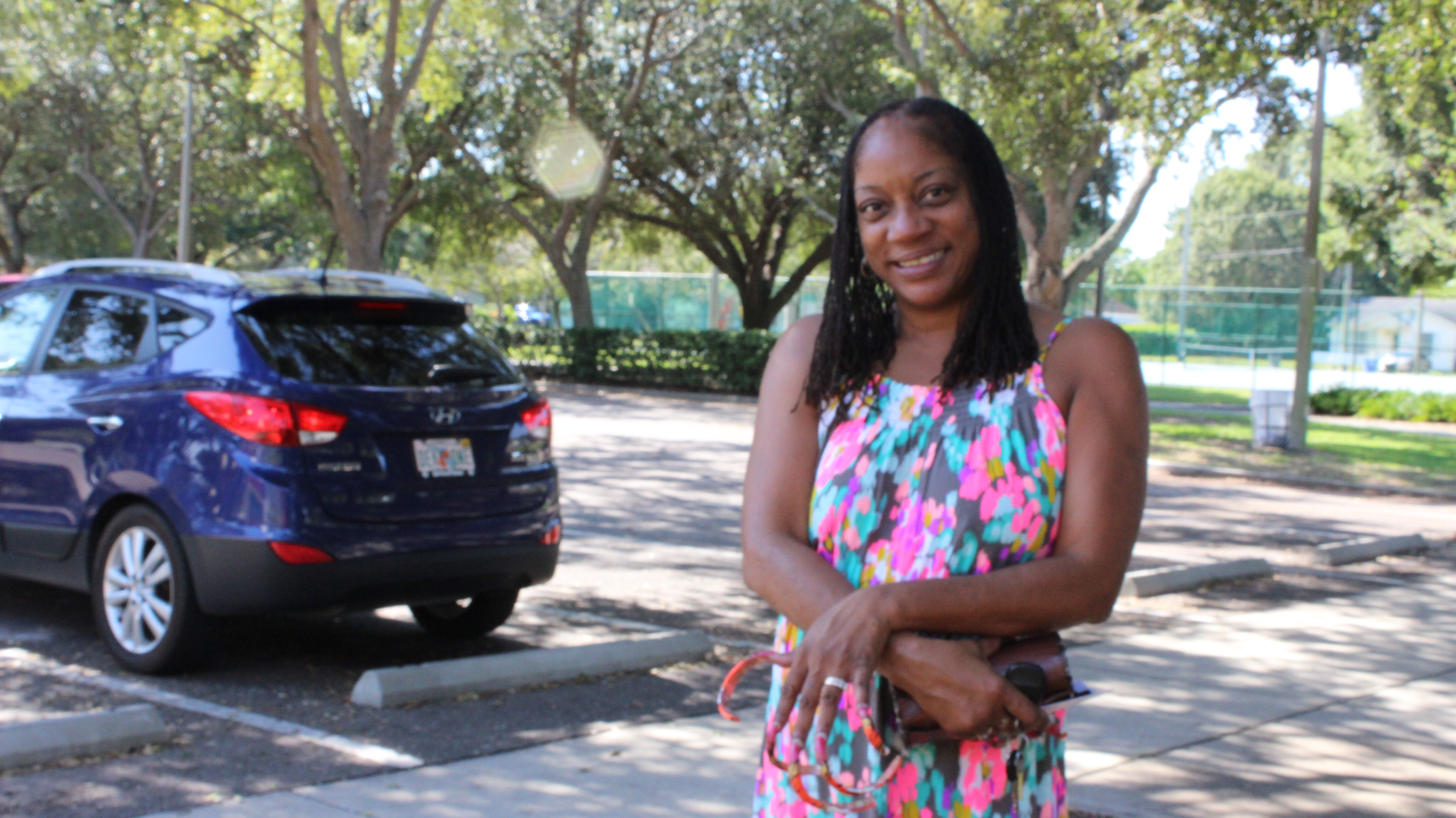BY SAMANTHA PRITZLAFF AND CHOYA RANDOLPH
NNB Reporters
ST. PETERSBURG – The Neighborhood News Bureau (NNB) reporters successfully participated in reporting the 2015 Municipal Election in Midtown, the first NNB Special Project since launching the new website in September 2015. This project was a collaboration with Creative Loafing in which USFSP students enrolled in NNB provided stories and information to Creative Loafing news and politics blog Political Animal.
The collaboration began with a USFSP professor who wanted his NNB class to have more hands-on experience in live reporting. Bernardo Motta, an assistant professor in the Department of Journalism and Media Studies, met in September with David Warner, Creative Loafing’s editor in chief and news and politics editor, Kate Bradshaw, about covering the upcoming elections. After some planning, Motta, Bradshaw, and Jared Leone, a graduate student at USFSP who also works as an editor for NNB, organized the students in the class to cover the essential parts of the elections.
Leone played the role of section editor for the project while each student-reporter was in charge of a different aspect of the election. Topics ranged from City Council candidates, referendum questions, talking to different groups of people throughout Midtown about their concerns and elections issues, covering the polls during voting day and promoting the stories on social media.
“[Students] had obstacles but almost all got their stories in,” Motta said. “I’m really proud of what the students produced,” he added.
Obstacles to reporting
Lorien Mattiacci chose to talk to two teachers at Melrose Elementary School, Kelly Milnes and Ashli Doss, about what they saw as important issues the candidates needed to address if elected.
She did run into some obstacles on the way when one of the teachers didn’t have much information on the candidates due to the fact that she didn’t live in the district, but she did have enforcement ideas.
One teacher did mention that the council used to work with the school. Students were able to take field trips to see and ask the city council questions. Sometimes the council would come to the school. According to Mattiacci, the council stopped coming because of a series of investigative articles published by the Tampa Bay Times as a special investigative project named “Failure Factories.”
Mattiacci planned to meet up with Milnes and Doss. She knew the two from a previous story she wrote. Milnes and Doss are journalism teachers in the “Journeys in Journalism“ program. Mattiacci did admit that she learned that she shouldn’t combine too many stories. However; she took multiple photos of the classroom, students and even helped with a lesson.
Other NNB reporters also revealed difficulty in finding people willing to talk about the elections. Some City Council candidates took days to return phone calls asking for interviews. One candidate even refused to talk to an NNB reporter.
“Most of my potential sources were too busy to talk or said they ‘didn’t want to get political,’” NNB reporter Danielle Von Dreele said. Von Dreele covered the first referendum question on the ballot concerning seagrass protection in the Tampa Bay and the St. Petersburg’s water supply.
Another student, Brigitte Toulon, had a few more obstacles than Mattiacci had. Toulon was assigned to interview event planners/organizers and people who head nonprofit organizations. She reached out to 3-4 people and only one got back with her. After many unanswered emails and voicemails, Toulon finally was able to get into touch with Susan Ajoc, the Director of Community Services for the City of St. Petersburg. Ajoc chose to not comment at all on the candidates. Toulon found herself with less amount of time to write and no one willing to talk. It wasn’t until a classmate suggested a name that Toulon was back on track with her story.
She was able to speak to Paul Wilborn, the Executive Director at the Palladium Theater. Toulon learned that responses about the election would vary because some knew more than others. According to Toulon, Wilborn didn’t know the candidates but was leaning towards Lisa Wheeler-Brown because of the issues involving the Tampa Bay Rays and Tropicana Field. Wilborn also mentioned that if he were to interview the candidates he’d ask them if they were able to give up their biases for the community.
Finding a way
Once the reporters got past their struggles, they produced results. Although some sources were difficult to get in contact with, they became fun to work with and contributed greatly to the stories.
City Council candidates District 5 candidate Steve Kornell and District 7 candidate Will Newton were among those who played a big role in helping shape their stories.
“I think the easiest part of the assignment, which wasn’t originally mine, was to cover Will Newton’s watch party,” said Toulon.
Toulon was encouraged by other journalists, and even Newton, when her camera battery died. According to Toulon, Newton was very calm at every aspect of the watch party. When Wheeler-Brown was announced for the winner, “the entire mood changed,” Toulon said. “You could tell that people were a disappointed,” Toulon added.
After learning about the result, Newton called Wheeler-Brown before anyone else just to congratulate her. According to Toulon, Newton was upbeat and calm after the winners were announced. He calmed Toulon’s nerves which made her comfortable to stay longer than she needed to.
Zenena Moguel covered Steve Kornell. Although she struggled at first, her story came through in the end.
“Once I was able to get to him, he’s actually a friendly guy,” Moguel said. “He contributed a lot to the profile. He wasn’t afraid to share his plans.”
Moguel also played a big role in helping advertise student’s election stories on social media.
“I think NNB deserves a lot more publicity about what we’re doing, so anything I can do to help, to get people to know how important this class is and how the students are really making a difference in this class for future journalism. That’s what I enjoy the most,” she added.
Overall, the entire process of completing this project, from scheduling interviews to writing the actual stories, was a learning experience in and of itself.
“This entire project, it takes a lot of teamwork. I don’t think it would have been so great with just a couple of us covering elections. We got point of views from people that were in the precincts, people that were at the candidate parties, we got an inside look at the entire election, and I think teamwork is the biggest thing here,” Moguel said.
“It’s like a beautiful symphony of musicians, tuning up and working together,” said Jared Leone, the Graduate Assistant who oversaw the project. “It all comes together at the end with beautiful music.”
Stay tuned at nnbnews.com for future, in-depth projects, including “Voices of Midtown,” coming in late November.
